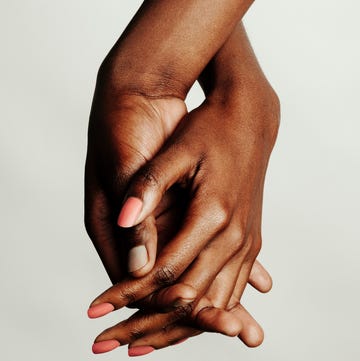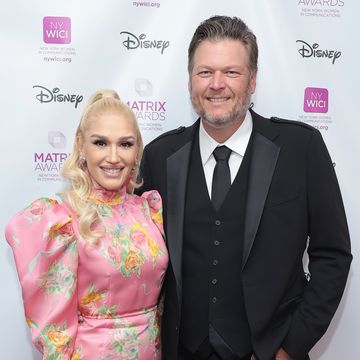Open relationships might seem taboo—but the truth of the matter is that they’re increasingly popular, and they might just unlock a whole new level of intimacy with your current partner (and other willing participants).
According to 2016 research, more than one in five people in the United States engages in consensual non-monogamy at least once in their lives. Plus, a 2020 poll found that only 56% of Americans want an entirely monogamous relationship, with young people expressing the least interest in having only one sexual and romantic partner. Monogamy just isn’t as popular as you might have thought.
So, what is an open relationship, and how does one work? Here, experts explain the rules of open relationships, if open relationships are considered “dating,” what to consider if you’re thinking of entering one, and how to bring up your desires to your current partner.
What is an open relationship?
In an open relationship, people are free to explore sexual experiences outside of their main coupling, says Nicolle Zapien, Ph.D., dean of the School of Professional Psychology and Health at California Institute of Integral Studies. And because active consent is involved, these relationships are not considered cheating.
“Open relationship” doesn’t have one definition, explains Tamara Pincus, L.I.C.S.W., C.S.T., founder of the practice Tamara Pincus and Associates, meaning that these arrangements take countless forms and arise from any number of needs. “Sometimes people are polyamorous and they fall in love with other people; sometimes people are swingers and they just hook up with other people at parties; sometimes people have hook-ups with people from apps,” she explains.
Relationships can be open both in terms of love and sex and they can be long- or short-term. But generally speaking, an open relationship usually consists of a couple discussing an arrangement, agreeing to review it, and continuing to have conversations about it, Zapien says.
“There are as many different agreements and constellations as you can imagine,” Zapien adds. Open relationships fall under the umbrella of ethical non-monogamy, a broad grouping that also encompasses polyamorous relationships—it covers any arrangement in which people are not completely emotionally and/or physically exclusive with their partners. (These relationship styles aren’t considered cheating, either.)
“I generally let people tell me what they mean by ‘open relationship,’” says Elisabeth Sheff, Ph.D., one of a handful of global academic experts on polyamory. More specific terms for certain types of open relationships include swinging (which involves seeking sex with other partners, either together or separately) and monogamish relationships (which involves being mostly monogamous in a couple).
Is an open relationship considered dating?
To understand if an open relationship is considered “dating,” it helps to know what the word “dating” means. “I have learned in my practice that different people define dating differently,” explains Sari Chait, Ph.D., a clinical psychologist at the Behavioral Health and Wellness Center in Newton, MA. “Some people only consider [a relationship] dating if two people are involved, but many people also consider any sort of romantic time together as dating.”
So, once you and your potential partner(s) get your definitions of dating figured out, you can then determine whether or not an open relationship falls into those guidelines and would agree with your dating boundaries. Chait emphasizes the importance of communication in open relationships, and you can only communicate your needs if you are clear on what those needs are yourself. However, Chait reassures that “if everyone involved is on board,” then open relationships can “definitely can be considered dating.”
How do open relationships work? Are there rules?
Just like there is no one definition of “open relationship,” there is no one arrangement or style that works for everyone—each couple must figure out what their own relationship will look like. “People’s rules often vary quite a bit, and there are whole books on how to negotiate your open relationship,” Pincus explains. (One worth checking out, she says, is Designer Relationships.)
People usually enter open relationships to get more of their needs met—a relationship might have a sexual desire mismatch, for example, but every pair is different. Polyamorous couples usually seek emotional attachments outside of the main pair, while swingers usually focus just on sex, Sheff says. The swinging community can also have more of a fleeting, “don’t ask, don’t tell” mentality, she notes.
But specific rules and parameters always vary. For example, some couples only date other couples, says Sheff. Many couples also agree on guidelines, which often center around the gender of any potential partners, safer sex practices, and communication before or after any rendezvous, Pincus says.
Open relationship rules can also get pretty creative, Zapien and Pincus say: “Don’t bring anyone home.” “Only pursue people from out of town.” “You can fool around, but not have sex.” “Don’t fall in love.” “You can only see people once.” “Only on Tuesday nights.”
“A lot of times, the rules are about protecting people from their fear of loss,” Pincus explains. “In a lot of long-term polyamorous relationships, you’ll find that people have less rules over time, because they get used to the idea that these things happen and they don’t lose their partners.”
Are open relationships healthy?
“Open relationships are as healthy as the people in them,” Sheff says. “Just like monogamous relationships, some of them are amazing, fantastic, life-affirming, and really wonderful.” Others, not so much. An open relationship’s health usually boils down to how it is handled—hopefully with love, integrity, and kindness to one another, she explains.
It’s also crucial that all parties involved are honest and communicative about their desires and encounters: “If there is coercion, or if one or more parties don’t have all the information and therefore aren’t consenting in an informed way, the relationship(s) could be said to be unhealthy,” Zapein says.
However, research suggests open relationships are often beneficial. One 2018 study, for example, found that swingers report higher sexual satisfaction than monogamous people, and that those in open relationships were just as satisfied with their relationships as people in monogamous relationships.
Is an open relationship right for you?
First and foremost, be prepared to grant your partner the same freedoms that you desire. “Don’t assume just because you want more sex that polyamory or an open relationship is for you,” says Sheff. “A lot of people get excited about the prospect of having multiple partners, but then get upset when the tables are turned and their partners have other partners.”
Your initial relationship must be healthy to begin with, Sheff says. “Consensual non-monogamy is kind of like a stress test or a jetpack—whichever way the relationship is headed, it just really zooms it in that direction.” Pursuing an open relationship to rescue a partnership doesn’t usually work: “It’s like having a baby to save a marriage,” she continues.
Plus, although you might be open to the idea of an open relationship, your partner might be devastated, Sheff warns. The right therapist or sex therapist can help with negotiations and help both of you anticipate situations you may not have considered, Zapien notes.
“All relationships need nurturing,” Pincus explains, so it’s absolutely essential to prioritize time to connect with each other and open communication. “Oftentimes, people get so excited about the sex with new people that they stop thinking about the sex with the partner they have, or trying to make sure that they’re still doing things with their partner that they like.” There’s also the slight possibility that your main relationship might evolve into a non-sexual one, she says.
Think you might be interested in an open relationship? Look at the bigger picture first: If you feel uncomfortable, realize your relationship isn’t as great as you thought it was, or can’t even stomach the thought of your partner with someone else, an open relationship might not be right for you, Sheff advises.
How do you ask for an open relationship?
If you do decide to have the conversation, Sheff often tells people to use something in the media—an article you read or a show you saw—as a jumping-off point. Ask your partner what they think about the topic or if they’ve ever heard of it to test the waters, she says.
Be vulnerable, clear, and tenacious—and be able to regulate your feelings, too, if you don’t get the response you expect or want, warns Zapien. If you both decide that it is worth exploring, make sure to check in with yourself and your partners from time to time to make sure the arrangement is still working, she says. (Also, it doesn’t hurt to practice safer sex and get tested for STIs regularly.)
Often, couples have to renegotiate terms, as non-monogamy doesn’t always work as you’d expect, notes Sheff. What if you don’t intend to fall in love, but then you do? Or what if you think you won’t be jealous, and then you are? Having a game plan—and being able to be flexible and open about conversation—helps in the long run.
And in the end, it’s crucial that you remember why you’re with your partner—and how to treat them with respect, even during bouts of jealousy. “Remember to be kind and patient with each other,” Pincus recommends, “even when people make mistakes—and they do make mistakes.”

Cassie Shortsleeve is a skilled freelance writer and editor with almost a decade of experience reporting on all things health, fitness, and travel. A former Shape and Men’s Health editor, her work has also been published in Women’s Health, SELF, Runner’s World, Men’s Journal, CNTraveler.com, and other national print and digital publications. When she’s not writing, you’ll find her drinking coffee or running around her hometown of Boston.

Jake Smith, an editorial fellow at Prevention, recently graduated from Syracuse University with a degree in magazine journalism and just started going to the gym. Let's be honest—he's probably scrolling through Twitter right now.












